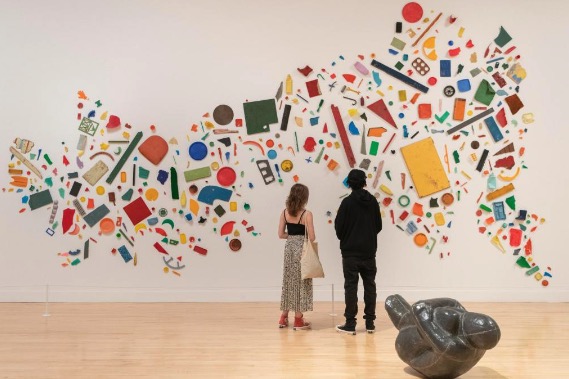
The gods of art are at it again. For reasons lost somewhere deep in the annals of humanity these mischievous imps of heaven love to stir and poke and confuse. And in the past couple of weeks, what fun they’ve been having.
First they arranged for Tate Britain to unveil a floor-to-ceiling rehang, the first such makeover in a decade. Then they fixed it for the National Portrait Gallery finally to reopen after a three-year tart-up that cost £41 million. Money, money, money. Where’s it gone, gone, gone?
These are not any old British museums. These are the two institutions charged most specifically with expressing our national identity. Tate Britain, as its name spells out, is the appointed home of British art. It’s where, in theory, we should go to see the nation’s art being collected, characterised and, you would have thought, praised.
The National Portrait Gallery is lumbered with an even fiercer communal agenda. The whole point of the NPG is to build a picture of the nation by remembering the faces that made it. Not only is portraiture a key shaper of national identity, but, until now, Britain has been thought to be particularly good at it.
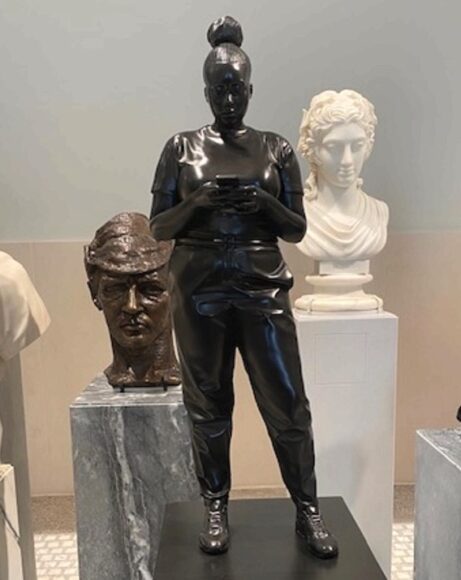
That was certainly the message charmed into me when I studied art history. Portraiture was a British speciality. In Gainsborough, Reynolds, Lawrence, and, before them, Holbein, Van Dyck, Dobson, we had artists who reached new heights and led the way internationally. Surely something to be proud of?
In another country, maybe. Not in this one. My tour this week of the nation’s chief explorers of artistic identity left me perplexed. Instead of happily enjoying how good British art can often be, and puffing out the chest a bit, here were two remodelled institutions rounding on the country like a pair of playground bullies and giving it a slapping.
It’s particularly evident at Tate Britain. Ever since it was created in 2000 by splitting the old Tate into two, none of its directors has appeared to enjoy running it. Grumbler after grumbler has ascended to the post and spent their time in Millbank sticking pins into the national effigy while wishing they were directing Tate Modern instead.
The present wearer of the crown, Alex Farquharson, seems the least enthralled of the lot. Ever since he took up the post in 2015 Farquharson has treated the collection as a personal noticeboard on which to lecture the nation on its shortcomings. His era has been spectacularly preachy.
On the subject of Britain’s colonial sins and its role in the tragedy of slavery, the new rehang is a stuck record. Badly written caption after badly written caption directs us not to the meaning of the artwork, or the aesthetic pleasures to be had from it, but to the grim social circumstances in which it was created.
Gainsborough appears here not as a fabulously inventive portraitist who gave wristy new freedoms to his brush, but as someone who worked for slave-owners. Constable is not here because the inventive looseness of his paintwork inspired the impressionists, but because the British landscapes that he painted had been unfairly redistributed by the enclosure system.
It’s all true. None of it can or should be denied. But to force such readings so clunkily and relentlessly on to the art, while aggressively ignoring the intentions of the artist, is institutional arrogance of a particularly haughty variety. Among all the self-appointed societal judges who have taken up their posts in the internet age, none is quite as outrageously self-appointed as the modern curator.
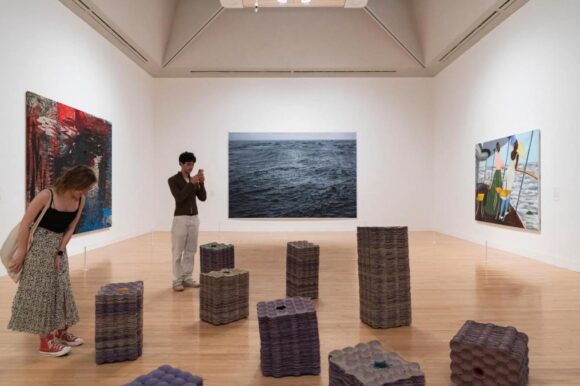
On my previous visits to Tate Britain, when the rehang was only partially complete, the harangues were not yet unhelpfully intrusive. With only half the final arrangement on display, the balance between artistic intentions and directorial coercion felt about right. Not any more.
Now, when you go to see English conversation pieces of the 18th century you need first to trip over Sonia E Barrett’s broken chair from 2013, splayed unhappily across the floor. Why? Because “English furniture in the 18th century was often made from mahogany produced by enslaved people in the Caribbean”.
The crime here is not the politics. The history of empire, the lament over slavery are issues that have inspired powerful art. In Barrett’s case they fail to do so, but regular visitors to Tate Britain will have plenty of experience of encountering weak produce. The crime here is treating the old masters as if they were a backcloth — handy old master wallpaper — for topics chosen willy-nilly by the curators. A managerial class is privileging its unearned views ahead of the work itself.
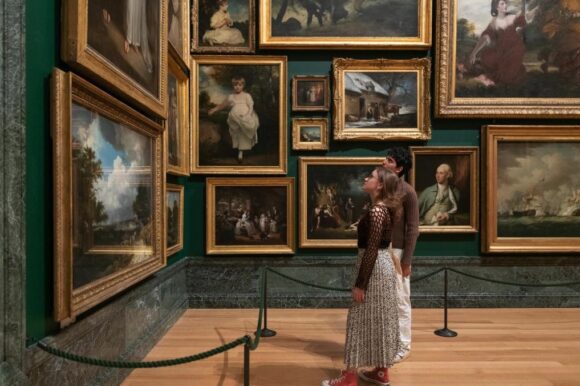
At the National Portrait Gallery similar sins are committed on a smaller scale. The director this time is Nicholas Cullinan, a curator whose positionings are so indistinguishable from Farquharson’s at Tate Britain I suspect they may be the same person. Both are white, middle-aged, metrocentric baristas who preach noisily that art is for all, while actively ignoring 90 per cent of the populace.
To be fair, Cullinan’s rejig has achieved some good things. The new entrance is pleasingly open and eminently sensible. At last, a gateway pointing in the right direction. Tracey Emin’s bronze doors are another triumph. Inside, the removal of various detours and brickings-up gives us spaces that feel full of light and airiness. That weird escalator that used to dominate the ticket hall, and that felt as if it had been reclaimed from Gatwick, has been cleverly reimagined as the base of an ambitious video wall.
Where we start to hit the icebergs is in the displayed portraits themselves and the messages they are being sent out to deliver. As soon as you enter, arranged in a line, is a welcome committee of sculptures on plinths. The first is a black woman staring intently at her mobile phone, Reaching Out by Thomas J Price. Behind her is Nelson Mandela, in a reduced version of that awful sculpture of him in Parliament Square. Around Mandela sits a ring of people, only one of whom I recognised: the actress Sybil Thorndike with her hawkish nose and lemur eyes.
The symbolism is clear: the NPG is going in a new direction. The gallery is no longer interested in parading Wellingtons and Churchills. We are not going to get monuments to white men here. National portraiture has changed.
Upstairs, the historic collections have been regrouped in pretty suites of coloured rooms. Henry VIII and his wives get a wall. So does Elizabeth I. It’s elegantly done, but lacks any tangible sense of aesthetic profundity or evident signs of scholarship. Being a recognisable face is all that counts.
So uninterested is the display in the genuine achievements of British portraiture that even as great an artist as William Dobson, the first native portraitist of genius, who gave a face to the English Civil War, has been excluded. Reynolds’s much-lauded portrait of Omai the Polynesian, over which there was such an acquisitional fuss recently, hangs in a room so dense with pictures you hardly notice it. Fifty million quid — wasted.
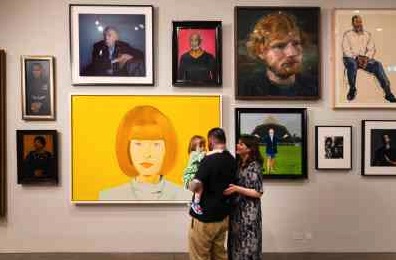
When we get to the contentious areas of British history — the empire, the colonies — the captions start buzzing like wasps again with accusatory excitement. Were the same writers who did the captions at Tate Britain brought over to do these as well?
As the story reaches our own times, a drum begins to be banged loudly on the subject of diversity. Pop stars, It girls, influencers and modern royals start crowding on to the walls. And the whole museum seems happy at last to have got away from the past. It can now focus on the famous faces and celebrities who entertain YouTube Britain.
There’s nothing for the 90 per cent in this cocktail hour of a display. Nothing for the pensioners. Nothing for the working classes. Nothing for the football fan or the pubgoer. Nothing for the Scots. Nothing for the Welsh. Nothing for the Irish, northern or southern. Nothing for Jews or the Chinese. My ancestors, the Poles, are represented across the two museums by a single artwork — Jacob Epstein’s wonky bust of Joseph Conrad.
The only audience served attentively by this big reimagining of Britain’s national identity is the metrocentric Londoner. Especially if they’re in the art world.
